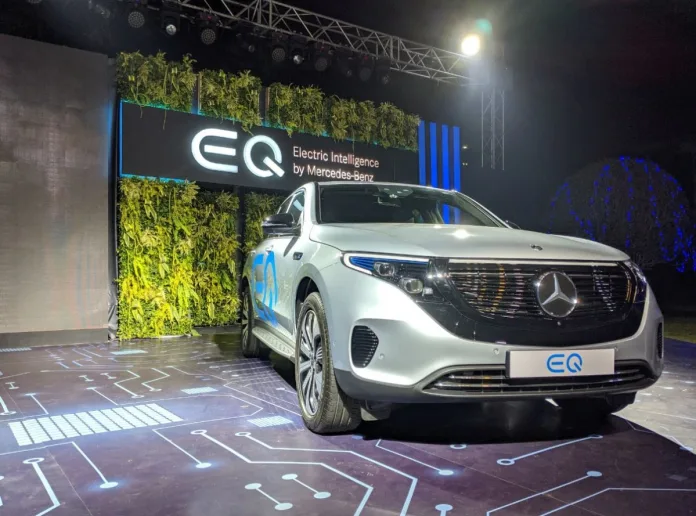Discover the best EVs under 1 crore India in our 2025 guide. Compare range, features, and performance of top electric vehicles across premium and affordable segments.
Table of Contents
EV India Market Overview: Growth and Trends in 2025
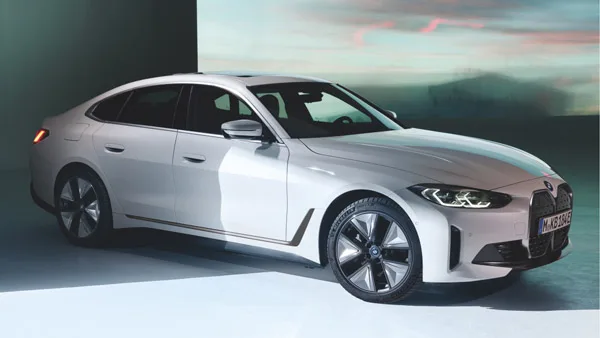
The electric revolution is no longer just approaching India—it has arrived. As someone who’s been tracking the automotive industry for over a decade, I’ve witnessed a remarkable transformation in the Indian EV landscape. In 2025, the market has matured significantly, with options spanning from affordable city runabouts to premium luxury vehicles.
The numbers tell a compelling story: the Indian EV market has grown from ₹8.03 billion in 2023 to ₹23.38 billion in 2024, and is projected to reach a staggering ₹117.78 billion by 2032. This represents a CAGR of 22.4%, making it one of the fastest-growing EV markets globally.
What’s driving this growth? Government support through the FAME scheme and Production Linked Incentives worth ₹1.2 lakh crore has certainly helped. But equally important is the changing consumer mindset. Electric vehicles are no longer viewed as experimental technology but as practical, desirable alternatives to conventional cars.
For buyers looking at EVs under 1 crore India, 2025 offers more choices than ever before. Let’s explore the top contenders across different price segments.
Best EV Cars in India: Premium Segment (₹40L-₹1Cr)
The premium segment of EVs under 1 crore India showcases the cutting edge of electric mobility. These vehicles combine impressive range, performance, and luxury features that rival or exceed their petrol counterparts.
1. Kia EV6 (₹60.97L – ₹65.97L)
The Kia EV6 stands out as one of the best electric cars in India with its futuristic design and class-leading range. Powered by a 77.4 kWh battery, it offers an impressive 708 km range on a single charge—the highest in its class.
What makes the EV6 special is its 800V architecture that enables ultra-fast charging, taking the battery from 10% to 80% in just 18 minutes at compatible stations. With 320 bhp on tap and a top speed of 192 km/h, it delivers performance that matches many petrol sports cars.
Inside, the panoramic curved display combining the digital instrument cluster and infotainment system creates a cockpit-like feel, while sustainable materials throughout the cabin reflect its eco-friendly ethos.
2. BMW i4 (₹72.5L – ₹77.5L)
The BMW i4 brings the brand’s renowned driving dynamics to the electric segment. With its 83.9 kWh battery providing a range of 590 km, range anxiety becomes a thing of the past.
The i4 exemplifies how the top 10 luxury cars in India now include compelling electric options. Its sleek four-door coupe styling houses a minimalist interior dominated by the curved display running BMW’s latest iDrive system.
Performance is a highlight, with the ability to sprint from 0-100 km/h in just 5.7 seconds and reach a top speed of 250 km/h. For buyers who refuse to compromise on the driving experience while going electric, the i4 makes a strong case.
3. BMW iX1 (₹66.9L)
The BMW iX1 represents the entry point to BMW’s electric SUV lineup. With a 66.4 kWh battery delivering 417 km of range, it strikes a balance between capability and efficiency.
What sets the iX1 apart is its practicality. Unlike some EVs that sacrifice space for batteries, the iX1 maintains the versatility expected from an SUV, with 540 liters of boot space that expands to 1,600 liters with seats folded.
The dual-motor setup produces 313 bhp, enabling a 0-100 km/h time of 5.6 seconds—impressive for a compact SUV. For families looking at EV cars under 1 crore with premium credentials, the iX1 deserves serious consideration.
4. Volvo C40 Recharge (₹62.95L)
The Volvo C40 Recharge brings Swedish minimalism and safety excellence to the electric crossover segment. Its 78 kWh battery provides 530 km of range, while the dual-motor setup delivers 408 bhp for spirited performance.
The C40 stands out with its coupe-like roofline and distinctive lighting signature. Inside, the sustainable interior uses recycled materials extensively, reinforcing Volvo’s environmental commitment.
Safety remains a Volvo hallmark, with the C40 featuring the most advanced driver assistance systems in its class, including Pilot Assist semi-autonomous driving capability.
5. BYD Seal (₹41L – ₹53L)
The BYD Seal represents the value proposition in the premium segment. Starting at ₹41 lakh, it offers features and performance that rival more expensive competitors.
Its 82.56 kWh battery delivers an impressive 650 km range, while the innovative Blade Battery technology offers enhanced safety and longevity. The Seal accelerates from 0-100 km/h in just 3.8 seconds in top trim, making it one of the quickest EVs under 1 crore India.
BYD’s growing dealer network and 8-year battery warranty address common concerns about newer brands, making the Seal a compelling option for tech-forward buyers.
Exploring Cars Under 50 Lakhs: Mid-Range EV Options
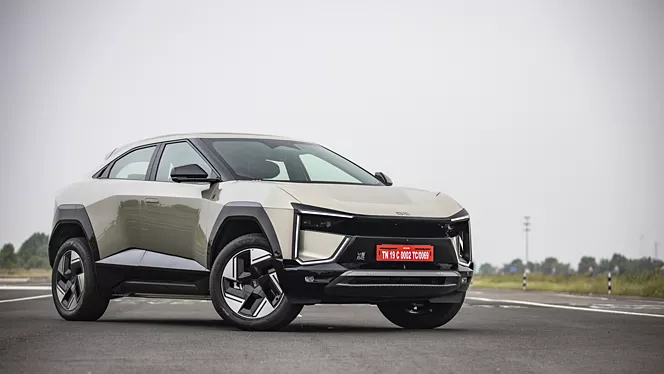
The mid-range segment, featuring cars under 50 lakhs, has seen significant growth in 2025. These vehicles offer a sweet spot of range, features, and affordability.
1. Mahindra BE 6 (₹18.9L – ₹26.9L)
The Mahindra BE 6 represents the company’s dedicated electric platform, offering between 557-683 km range depending on the variant. With 228 kW of power, it delivers performance that belies its price point.
The BE 6’s distinctive design language sets it apart from conventional SUVs, with its “heartbeat” LED signature and floating roof design. Inside, the panoramic glass roof and sustainable materials create an airy, premium feel.
Mahindra’s extensive service network provides peace of mind for buyers new to electric vehicles, making the BE 6 a practical choice for those transitioning from petrol cars.
2. Mahindra XEV 9e (₹21.9L – ₹30.5L)
The Mahindra XEV 9e offers a larger alternative to the BE 6, with similar range capabilities of 542-656 km. Its three-row configuration makes it one of the few electric vehicles suitable for larger families.
Advanced features include vehicle-to-load capability, allowing the XEV 9e to power external devices—useful during outdoor activities or power outages. The dual-screen setup and ambient lighting create a tech-forward interior ambiance.
For buyers seeking a practical family EV with impressive range, the XEV 9e fills an important niche in the market.
3. Tata Curvv EV (₹17.49L – ₹21.99L)
The Tata Curvv EV brings coupe-SUV styling to the mass market. Its 55 kWh battery delivers between 430-502 km of range, addressing the primary concern for many potential EV buyers.
Tata’s reputation for safety continues with the Curvv, which boasts a 5-star safety rating. The minimalist interior features a floating touchscreen and digital instrument cluster, while the panoramic sunroof enhances the sense of space.
The Curvv’s competitive pricing makes it one of the most accessible ways to enter the electric SUV market without compromising on style or capability.
4. MG ZS EV (₹18.98L)
The MG ZS EV has evolved significantly since its introduction, with the 2025 model featuring a 50.3 kWh battery that delivers 461 km of range. Its conventional SUV styling appeals to buyers seeking a familiar form factor.
The ZS EV stands out with its comprehensive feature list, including a 360-degree camera, panoramic sunroof, and connected car technology. The spacious interior offers 448 liters of boot space, making it practical for family use.
MG’s 8-year battery warranty addresses longevity concerns, while the growing charging network makes the ZS EV increasingly practical for intercity travel.
5. Hyundai Kona Electric (₹23.84L)
The Hyundai Kona Electric combines Korean reliability with proven electric technology. Its 39.2 kWh battery delivers 452 km of range, while the refined driving experience makes it a pleasure for daily use.
The Kona’s understated design conceals its electric nature, appealing to buyers who prefer discretion over making a statement. Inside, the quality materials and logical layout reflect Hyundai’s user-centric approach.
With Hyundai’s extensive service network and reputation for reliability, the Kona Electric offers a low-risk entry into electric mobility.
Best Electric Cars in India: Budget-Friendly Options
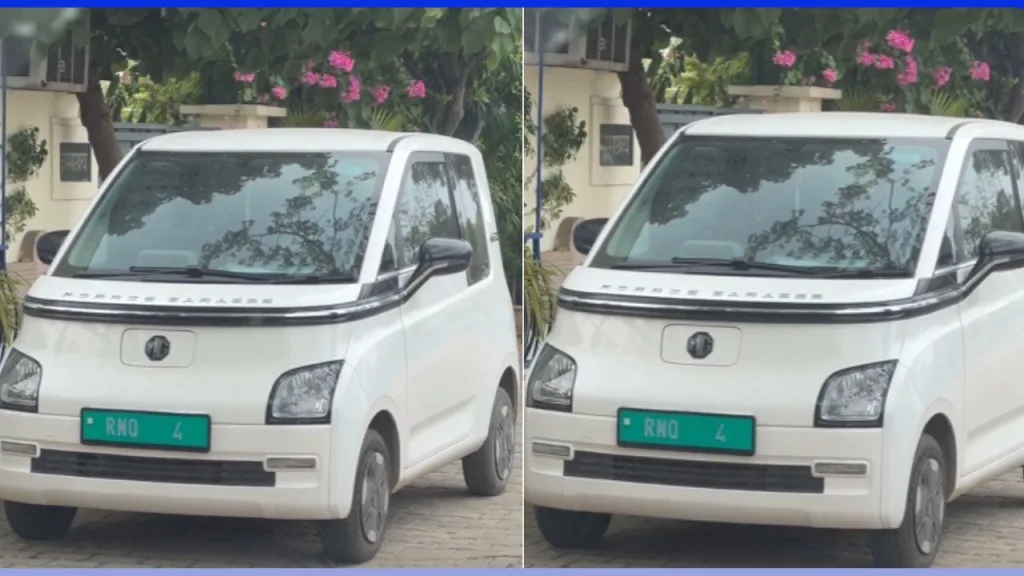
For buyers seeking affordable entry points into electric mobility, these EVs under 15 lakhs offer practical solutions for urban commuting.
MG Comet EV (₹6.99L)
The MG Comet EV is the most affordable electric car from an established brand in India. Its compact dimensions make it perfect for navigating congested city streets, while the 17.3 kWh battery provides 230 km of range—sufficient for weekly urban commuting.
Despite its budget positioning, the Comet includes features like a dual-screen setup, connected car technology, and a digital key. Its quirky styling turns heads, making it a fashion statement as much as a mode of transport.
Tata Tiago EV (₹7.99L)
The Tata Tiago EV brings electric mobility to the mainstream hatchback segment. Available with either 19.2 kWh or 24 kWh batteries, it offers between 250-315 km of range.
The Tiago EV’s familiar design conceals its electric powertrain, making it an approachable option for first-time EV buyers. The feature list includes automatic climate control, a 7-inch touchscreen, and regenerative braking with multiple levels.
As one of the most affordable EVs under 15 lakhs, the Tiago EV makes a strong case for urban families looking to reduce their carbon footprint and fuel expenses.
EV Range Comparison India: Which Models Go the Distance
Range remains a primary consideration for EV buyers. Here’s how the top models compare:
| Model | Price Range (₹) | Range (km) | Battery Capacity | Range Efficiency (km/kWh) |
|---|---|---|---|---|
| Kia EV6 | 60.97L – 65.97L | 708 | 77.4 kWh | 9.15 |
| BMW i4 | 72.5L – 77.5L | 590 | 83.9 kWh | 7.03 |
| BYD Seal | 41L – 53L | 650 | 82.56 kWh | 7.87 |
| Mahindra BE 6 | 18.9L – 26.9L | 557-683 | N/A | N/A |
| Tata Curvv EV | 17.49L – 21.99L | 430-502 | 55 kWh | 7.82-9.13 |
| MG Comet EV | 6.99L | 230 | 17.3 kWh | 13.29 |
Interestingly, some of the more affordable models like the MG Comet EV demonstrate better range efficiency (km per kWh), though their absolute range is lower due to smaller batteries.
Current State of EV Charging Infrastructure India
The growth of EVs under 1 crore India has been matched by expanding charging infrastructure. As of 2025, India has over 10,000 public charging stations, with significant concentrations in metropolitan areas.
Fast-charging networks along major highways have reduced the anxiety of intercity travel, with stations typically placed every 50-100 km on popular routes. The government’s FAME II scheme has allocated substantial funding for charging infrastructure development.
Home charging remains the primary method for most owners, with 7.4 kW AC chargers capable of fully charging most EVs overnight. Several manufacturers now include basic home chargers with vehicle purchase, simplifying the transition to electric mobility.
Buying Guide: Key Considerations for EV Purchase
When evaluating EVs under 1 crore India, consider these factors:
- Range Requirements: Assess your daily driving needs and choose a vehicle with at least twice that range to account for battery degradation and varied driving conditions.
- Charging Access: Confirm you can install a home charger or have reliable access to public charging infrastructure near your regular destinations.
- Battery Warranty: Look for manufacturers offering at least 8 years or 160,000 km battery warranty for peace of mind.
- Total Cost of Ownership: While purchase prices may be higher, factor in lower running costs (approximately ₹1-1.5 per km compared to ₹7-9 for petrol vehicles) and reduced maintenance requirements.
- Residual Value: Consider brands with established market presence, as they typically maintain better resale value.
- Feature Set: Evaluate technology features like regenerative braking levels, driving modes, and connectivity options that enhance the electric driving experience.
Where EVs Rank Among Top 10 Luxury Cars in India
Electric vehicles are increasingly featured among the top 10 luxury cars in India, with models like the BMW i4 and Kia EV6 competing directly with traditional luxury offerings. Their combination of performance, technology, and environmental credentials appeals to affluent, forward-thinking buyers.
The premium EV segment has grown from just 2% of luxury car sales in 2023 to over 15% in 2025, indicating a significant shift in consumer preferences. This trend is expected to accelerate as more luxury brands introduce electric models.
Conclusion: The Future of Electric Mobility in India
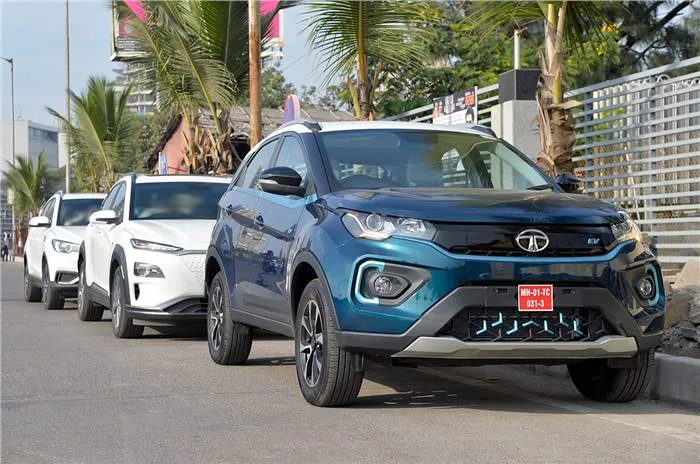
The market for EVs under 1 crore India has matured significantly, offering compelling options across price segments. From affordable city runabouts to premium luxury vehicles, electric cars now cater to diverse consumer needs and preferences.
With 35 new electric models planned for launch between 2025-2027, the choices will only expand. Government support, improving infrastructure, and increasing consumer acceptance are creating a perfect storm for electric mobility growth in India.
Whether you’re considering your first electric vehicle or upgrading from an earlier model, 2025 represents an excellent time to make the switch. The combination of extended range, reduced charging times, and expanding infrastructure has addressed many early adoption concerns, making electric vehicles increasingly practical for everyday use.
As you evaluate your options, consider not just the purchase price but the total ownership experience—from daily driving pleasure to long-term running costs. The best EV for you balances range, features, and price in a way that complements your lifestyle and driving needs.


